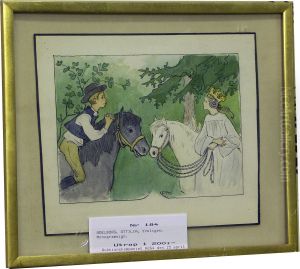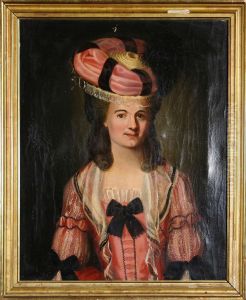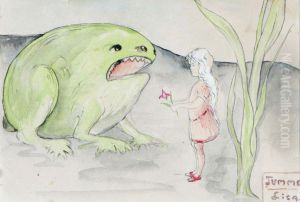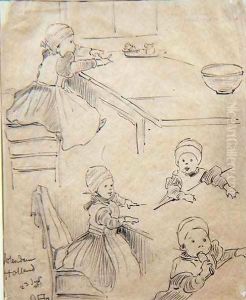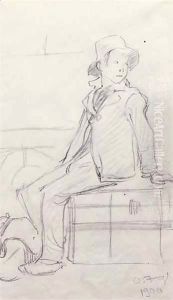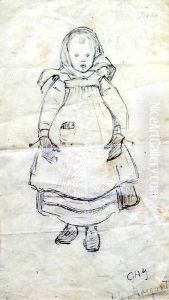Ottilia Eva Adelborg Paintings
Ottilia Adelborg was a Swedish artist and illustrator born on December 6, 1855, in Karlskrona, Sweden. She was part of a noble family and was the daughter of a naval officer. Her interest in the arts was evident from a young age, and she pursued an education in this field despite the limited opportunities available to women at the time.
Adelborg initially studied at the Royal Swedish Academy of Fine Arts in Stockholm, which had begun to admit women in the latter half of the 19th century. After completing her education in Sweden, she furthered her studies abroad, which was common for Scandinavian artists of the period seeking broader artistic exposure. Adelborg spent significant time in France, where she was influenced by contemporary movements, particularly by the French illustration and the burgeoning Art Nouveau style.
Throughout her career, Ottilia Adelborg was best known for her work as an illustrator. She created illustrations for children's books and educational materials, infusing them with a sense of warmth and whimsical charm. Her illustrations often featured themes of Swedish folklore and daily life, reflecting a national romantic style which was popular in Sweden during her time. One of her most notable works was her illustrations for the children's book 'Pelle Snygg och barnen i Snaskeby' ('Pelle the Clean and the Children of Snaskeby'), which became a classic in Swedish children's literature.
In addition to her illustration work, Adelborg was also an accomplished painter, though this aspect of her oeuvre was less recognized during her lifetime. Her paintings often depicted domestic scenes, landscapes, and portraits, characterized by a delicate and refined use of color.
Ottilia Adelborg also made significant contributions to the preservation and promotion of Swedish folk art and culture. She was an advocate for women's rights and was involved in various social and cultural initiatives. For her contributions to art and culture, she was awarded the Royal Medal Litteris et Artibus in 1915.
Adelborg lived through a period of great transformation in the art world, witnessing the transition from traditional academic art to modernism. Despite the shifts in artistic trends, she remained dedicated to her unique style and subject matter, which continued to endear her to the Swedish public.
She spent her later years in the small town of Gagnef, where she became an integral part of the community, contributing to local cultural life and education. Ottilia Eva Adelborg died on March 19, 1936, in Gagnef, leaving behind a legacy as one of Sweden's beloved illustrators and as a champion of national culture and heritage.
